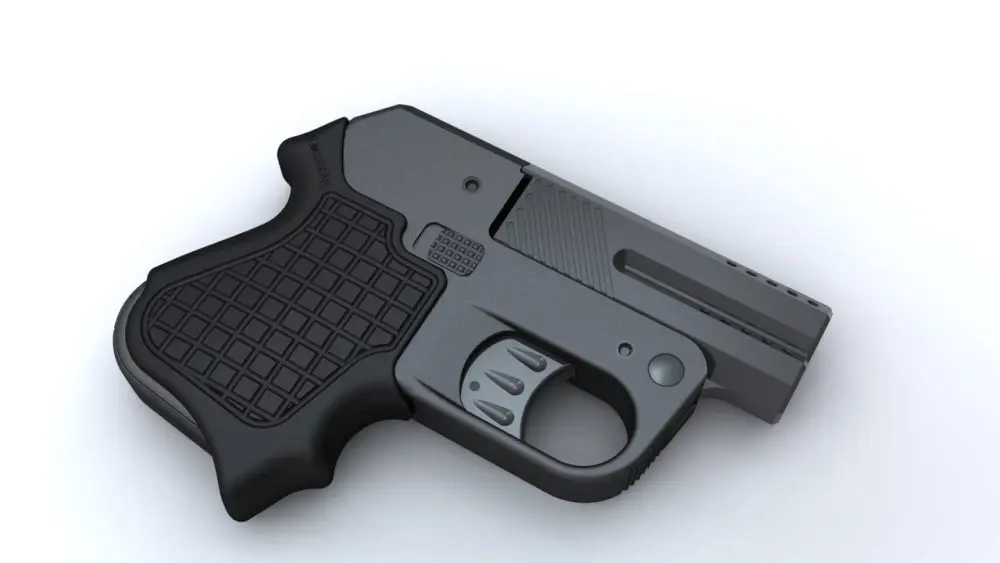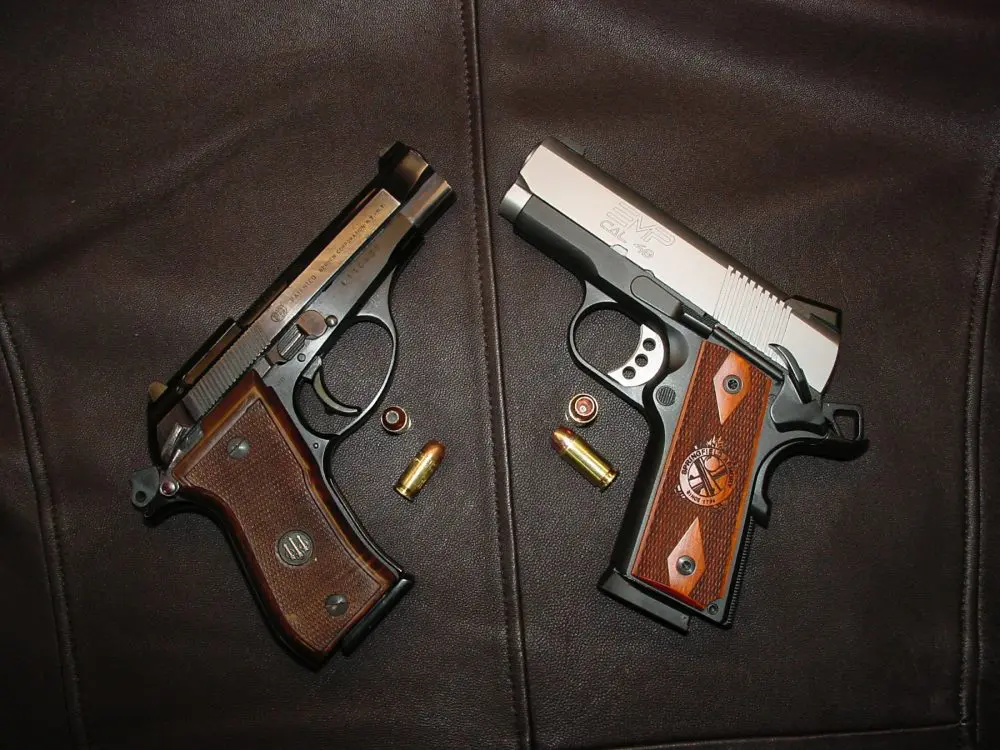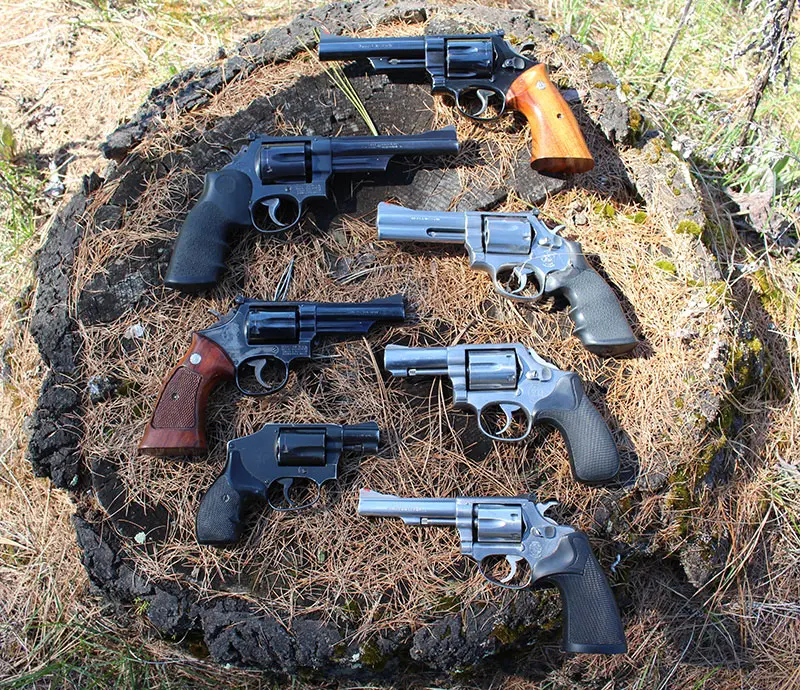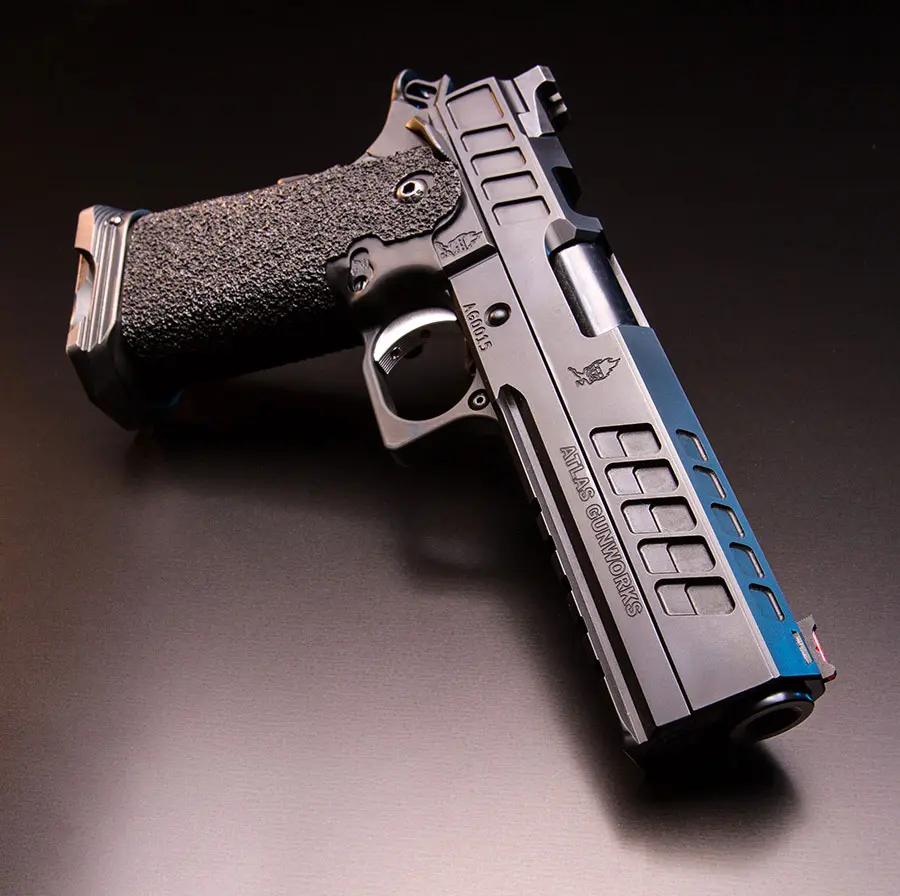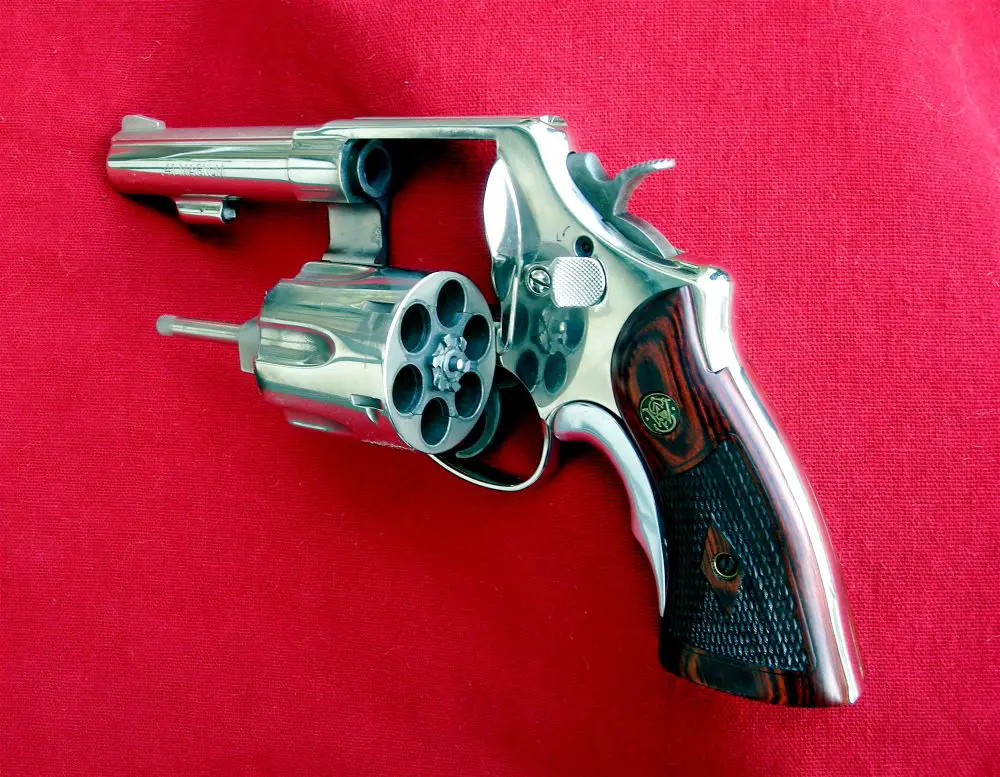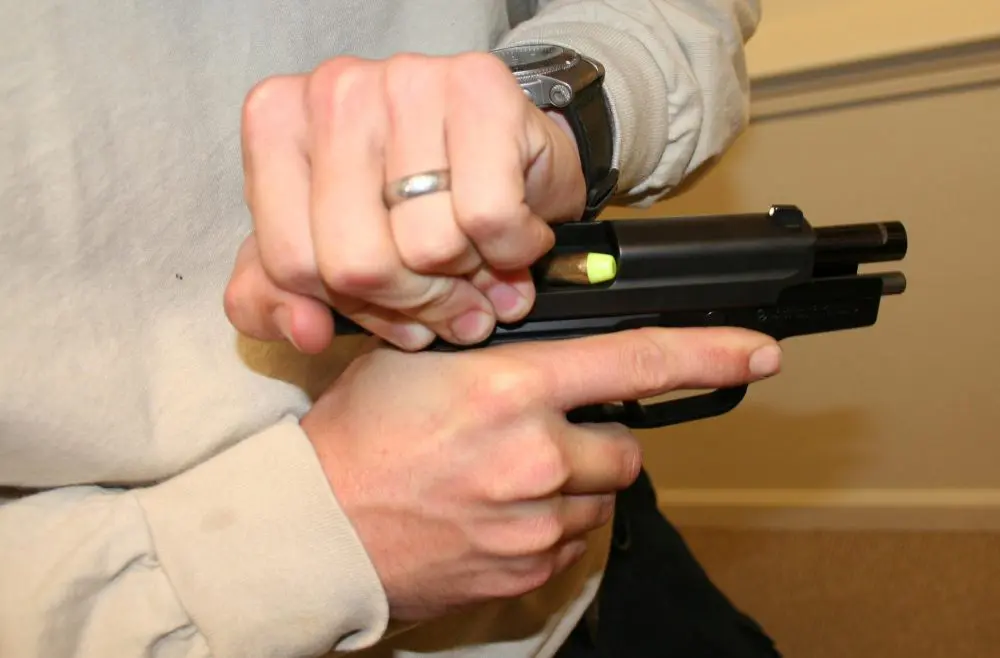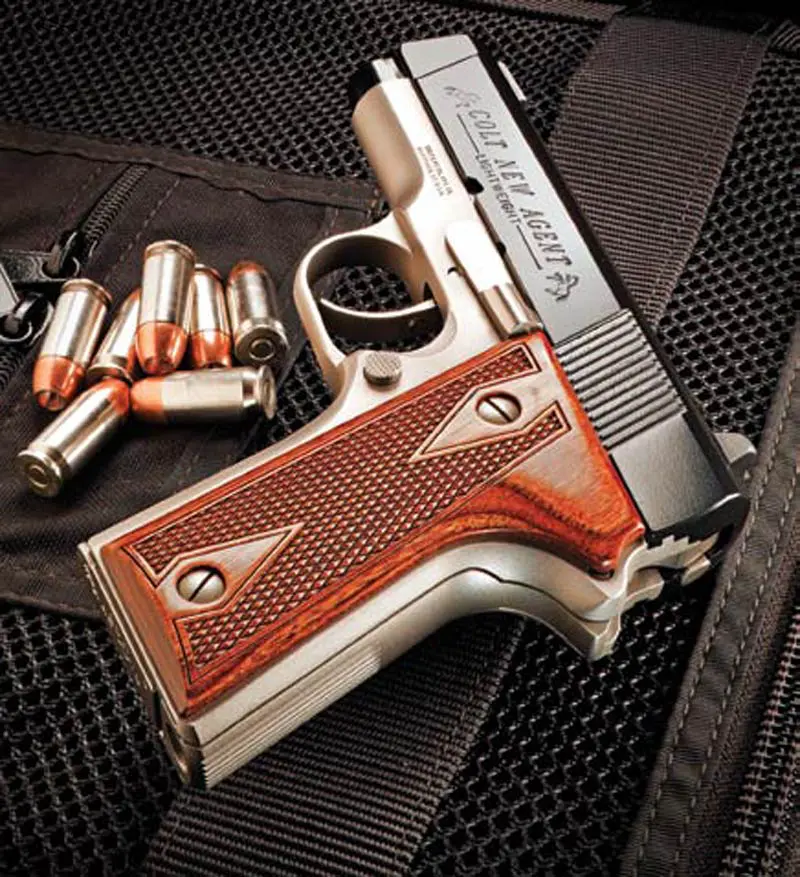
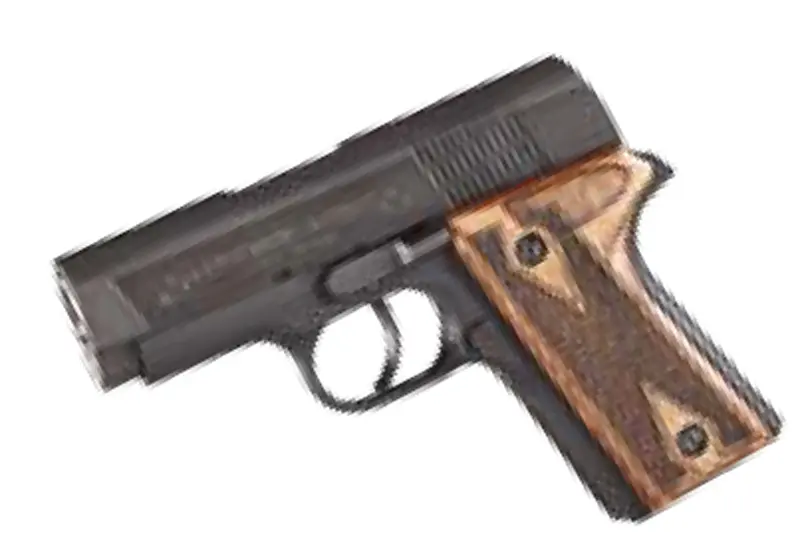
I even traveled with it to my first office in Los Angeles. But I quickly augmented it with Smith’s M19, so I could fire Magnum loads if required.
A number of older agents assigned to the field division carried issued Colt two-inch barreled Agent revolvers, with and without a hammer shroud, including a World War II P-38 fighter pilot who mentored me. In spite of his age, Jim did not wear glasses and monotonously fired a “possible” during monthly requals with the lightweight six-shot snub.
I had an opportunity to recon the office gun vault one day. It still had an inventory of firearms that were instrumental in busting up Prohibition-era gangs. Among them were Colt Official Police and “N” framed triple-lock Smiths, Colt .38 Super 1911s, and a wall full of Thompson submachine guns. My mouth was watering. I almost cried when told that this collection of firearms history was unceremoniously destined for destruction.
The aluminum-framed Colt wheel gun was introduced to the shooting world in 1962 and produced until 1979. A revised version with shrouded barrel was produced in 1973 and revived again from 1984 to 1986.
Table of Contents
COLT NEW AGENT
Much to the satisfaction of Colt aficionados, in the latter part of 2010 the historic company delivered the New Agent, a 1911-style pistol with aluminum frame in calibers 9x19mm and .45 ACP. There are three versions.
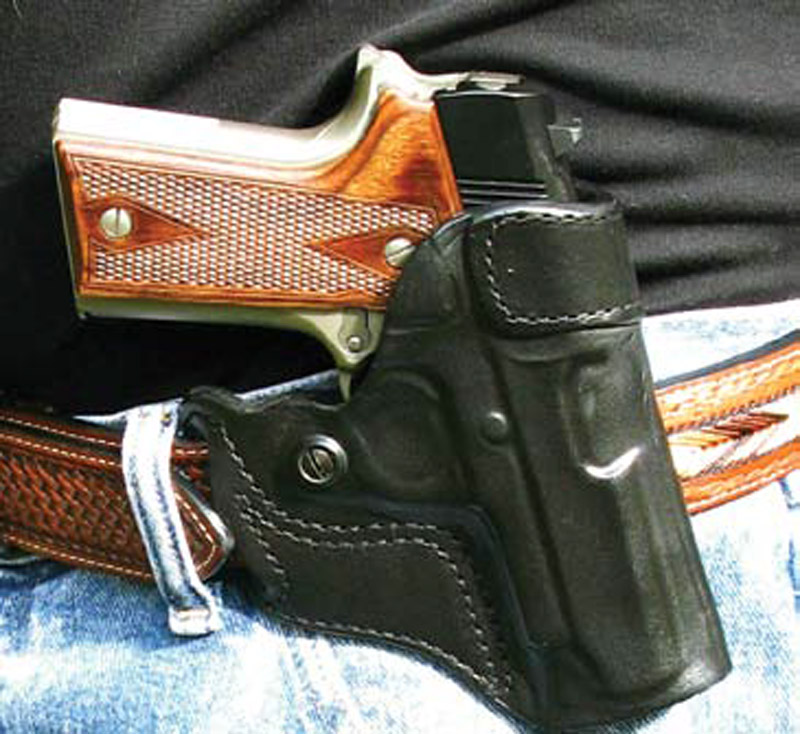
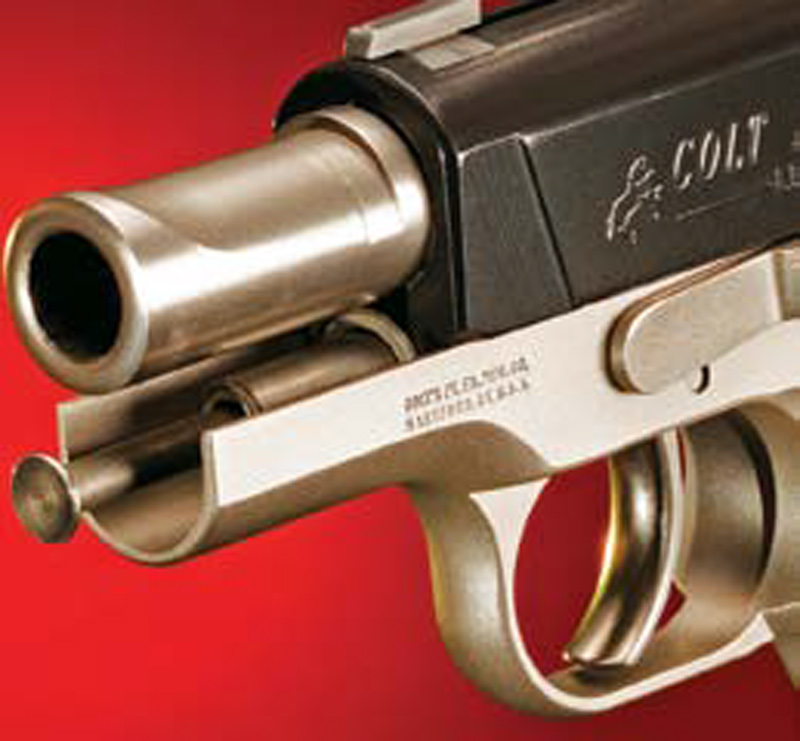
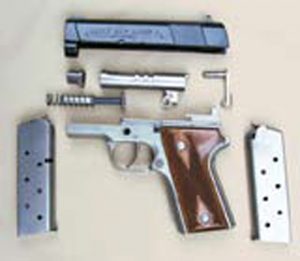
Two are single-action and one, the subject of this article, is double-actiononly (DAO). To the best of my knowledge, this is the first DAO pistol since Colt’s marketing of the ill-fated Double Eagle pistol, which briefly kindled FBI interest when the agency was first exploring the 10mm cartridge.
If we are honest, we must acknowledge that there are some 1911 fans who are not comfortable with Condition One cocked-and-locked carry and often holster their single actions in Condition Three, Israeli style, with hammer down and chamber empty. The subcompact DAO New Agent is designed to alleviate that anxiety with Colt’s latest hammer down, point and shoot pistol.
MULTIPLE SAFETIES
This is a very safe pistol. Its relatively long and heavy trigger pull requires a very deliberate action to operate. Included within the system are redundant safeties that function during the firearm’s cycling. The hammer safety notch prevents the hammer from unintentionally contacting the firing pin when the slide slams forward into battery, therefore preventing full-automatic fire. The disconnector prevents the pistol from firing when out of battery. Finally, the inertia firing pin cannot contact a cartridge’s primer without the hammer overcoming the firing pin’s spring tension, and the firing pin lock blocks firing pin movement until the trigger is pulled.
Disassembly without a barrel bushing is typical 1911.
From the factory, the Colt comes in the ubiquitous padded plastic and lockable case. Contents are Spartan for a relatively expensive subcompact pistol. In addition to the firearm are two seven-round stainless steel magazines. Accessories are limited to a cable security lock and manual. There are no holsters, magazine pouches, loading devices or cleaning brush such as often found in less expensive and higher capacity polymer competitors, but again, you are acquiring the Colt name.
This pistol is designed for close-quarter work, so instead of sights, it features a “Tunnel Sight” grooved into the slide. This trough functions like a reverse rib for pistol indexing and would warm the heart of any point shooter. My most recent experience with this rudimentary alignment system was with the stunted 2007 Kimber RCP II in .45 ACP. As a point shooting pistol, it worked fine and was quite controllable.
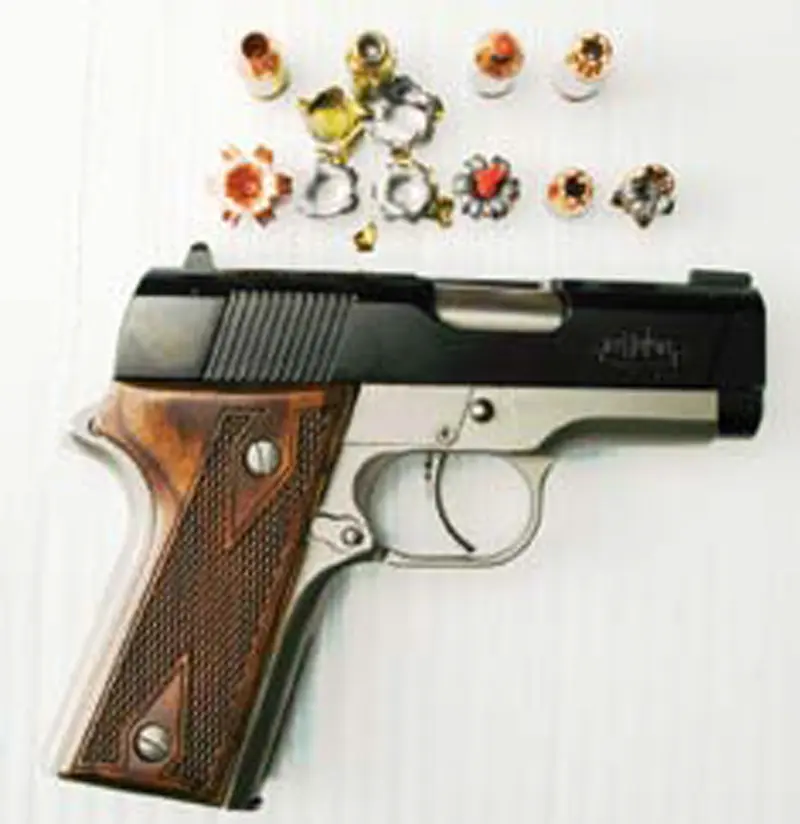
The DAO New Agent employs a spade-type hammer that fits flush into the slide recess and cannot be thumb cocked. Full-size 1911 magazines will function in the little Colt, but the flushfitting stainless-steel magazines provided will hold seven fat boys for a total of eight rounds immediately on tap. The magazines do not have base pads.
THAT RASCALLY ROBAR
Not one to leave well enough alone, the subcompact Colt caught Robbie Barrkman’s professional eye. He and his staff at Robar Companies, Inc. have taken the already good-looking little blaster to new levels of beauty and performance.
The first thing you notice is that Robar’s version sports their impervious NP3 finish on the aluminum frame. This subdued but attractive plating has also been extended to all internal parts.
Those familiar with the New Agent will be struck by Robar’s incorporation of a set of rugged fixed sights dovetailed into the very slick Roguard finished and dehorned slide. The entire pistol, including the rear sight, has been melted and completely deburred. Its feed ramp and barrel throat have been polished and the pivoting trigger’s edges rounded for operational comfort.
Robar has not lightened the trigger but polished its linkage for smoother operation. Colt installed a very nice and almost invisible trigger stop at the upper back end of the trigger. This lets the shooter take up trigger travel very quickly and stage the trigger just before sear release for a precision shot. However, for close-in defensive situations, the trigger should be stroked straight through without any hesitation.
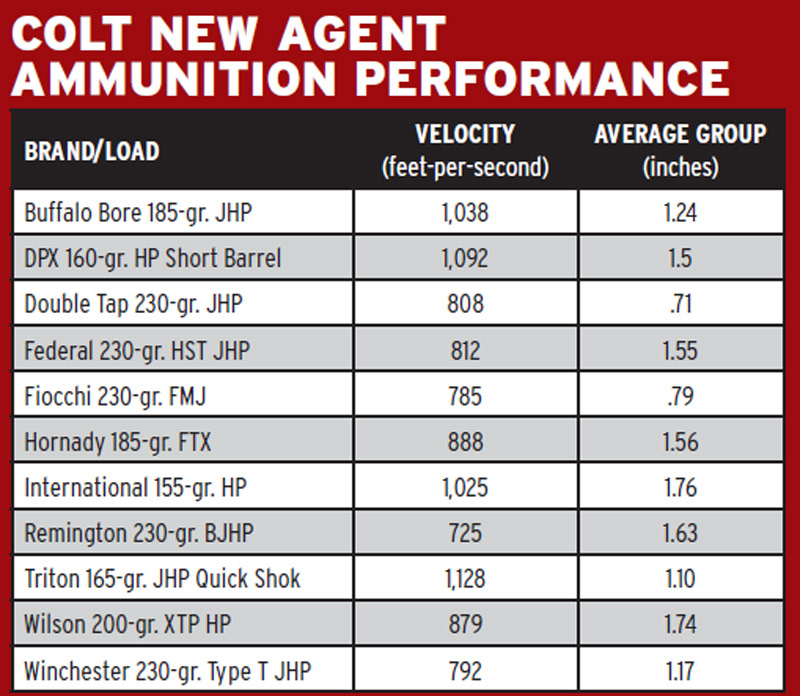
The magazine well was beveled by Colt, but Robar “flared” it for quicker and surer magazine changes.
Gene DeSantis provided me with his very popular Sky Cop crossdraw leather holster. It is an extremely efficient method of carry for this piece, particularly when seated.
COLT NEW AGENT FIELD TRIALS
Although this is a simple point-andshoot pistol, I cannot recommend it for novices. With its heavy and relatively long trigger stroke, it is certainly safe enough, but what makes it comfortable to carry concealed does not help the little beast absorb recoil.
It has the contemporary dual recoil springs that are designed to stabilize smaller pieces, but recoil and muzzle blast are substantial even with standard velocity ammunition. Loaded with +P .45 ACP rounds, it will shake your immediate environment and give your hand and wrist a good workout. Under stress, you will probably not notice its bark and bite. Convulsive close-quarter speed shooting will result in low hits for most of us, but at those intimate distances, it usually doesn’t matter. It should go without saying you should re-index your front sight to pace your shots at longer ranges.

The way my hand is configured, my trigger finger invariably contacts the bottom edge of the trigger guard when stroking a pivoting trigger. Combine this with healthy recoil and I will develop a small blood blister on the right side of that digit. This Colt was no exception to this personal idiosyncrasy. Further testing required a strip of duct tape placed around the finger.
The New Agent would benefit from a beavertail-style backstrap. It would distribute the recoil more efficiently and make the gun more comfortable to shoot. A defensive handgun must have no distractions. Pain, no matter how trivial, can be a major one. If Robar could create an improved backstrap, it would be a worthwhile modification and look good at the same time.
EXCELLENT ACCURACY
Shooting off a Hyskore pistol rest at 15 yards, Double Tap’s 230-grain jacketed hollow points (JHP) tore through a Birchwood Casey Sharpshooter target with a .71-inch five-round cluster. All 11 brands of ammunition tested grouped under two inches. For a three-inch barreled pistol with corresponding short sight radius, this is very good, and I would expect no less from Colt.
Although I could stage the trigger, its weight did not help in the precision department. My observer remarked that he could see the muscles in my forearm trembling as I squeezed the trigger and patiently waited for a surprise break.
Periodically I would experience failures to feed with JHP ammo. This event would habitually occur on the last round in one magazine. These stoppages resembled a nose-up stove pipe with the bullet nose stuck up against the chamber’s roof at 12 o’clock. Barrkman advised that the magazine’s springs might need strengthening.
With great care, I fired a hand-sized eight-round group, standing with a two-handed grip at 25 yards. On a static target, head shots at that distance are possible.
Although it appears they are no longer in business, a cavernous 165-grain Triton Quick Shok JHP roared out of the compact Colt at the highest single velocity of 1,146 feet per second (fps). It epitomized the sobriquet “hand cannon.”
TERMINAL BALLISTICS
As noted, 11 different brands of ammunition were launched through the Colt’s three-inch tube with bullet weights ranging from 155 to 230 grains. Shorter barrels mean lower velocities and less bullet expansion but deeper penetration. These observations were confirmed with four different rounds fired into a bare 20-inch block of Perma-Gel ballistic test media from five yards. In the four-round test mix, DPX 160-grain hollow point was the only cartridge specifically designed for “compact handguns.” This all-copper round and the two 185-grain bullets selected did well. However, the 230-grain JHP passed through the block with little or no bullet upset. (See Perma-Gel Tests table.)
The bottom line: use lighter, highervelocity bullet loads if you want limited penetration and bullet expansion. If you need to get through barriers and/or automobile sheet metal, carry a 230-grain or heavier bullet in the stunted Colt.
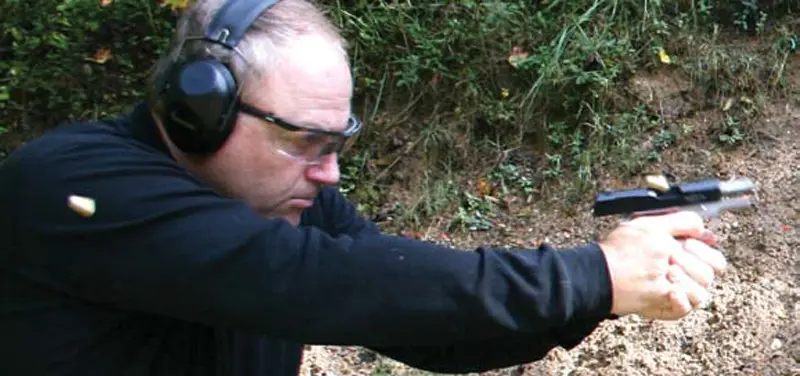
DEFENSIVE SHOOTING
This is a close-combat weapon. Trigger management will have the greatest impact on achieving fast and effective hits. The trigger must be allowed to reset. If you ride the trigger to reset, you may short stroke it, especially if you have been conditioned to operate triggers with shorter reset travel. Short stroking will result in no trigger reset. The best way to ensure trigger reset is to come completely off the trigger and actually contact the inside of the trigger guard with your trigger finger, come back on the trigger and pull straight through.
In addition, unless you are revolver king Jerry Miculek, shoot the New Agent’s front sight and allow the reindexing of its front sight to pace your intervals between multiple shots. With this technique, I could keep my oneand two-handed speed-shooting drill hits within the targets’ kill zone at five and seven yards respectively.
CONCLUSIONS
The Colt New Agent is a lightweight, powerful, compact and accurate handgun that is a real handful. It is not for novice shooters. It will appeal to experienced individuals who are not comfortable with Condition One carry but want a hot-chambered 1911 pistol that simply requires a pull of the trigger to operate.
Robar’s customized improvements increase the pistol’s capabilities and enable it to fight effectively beyond closequarter ranges. His internal and external replacement finishes not only increase the pistol’s durability and service life but make the piece more attractive as well. Robar’s work is not inexpensive, but the total cost of the New Agent with his modifications and improvements compares favorably with other high-dollar compact pistols.
